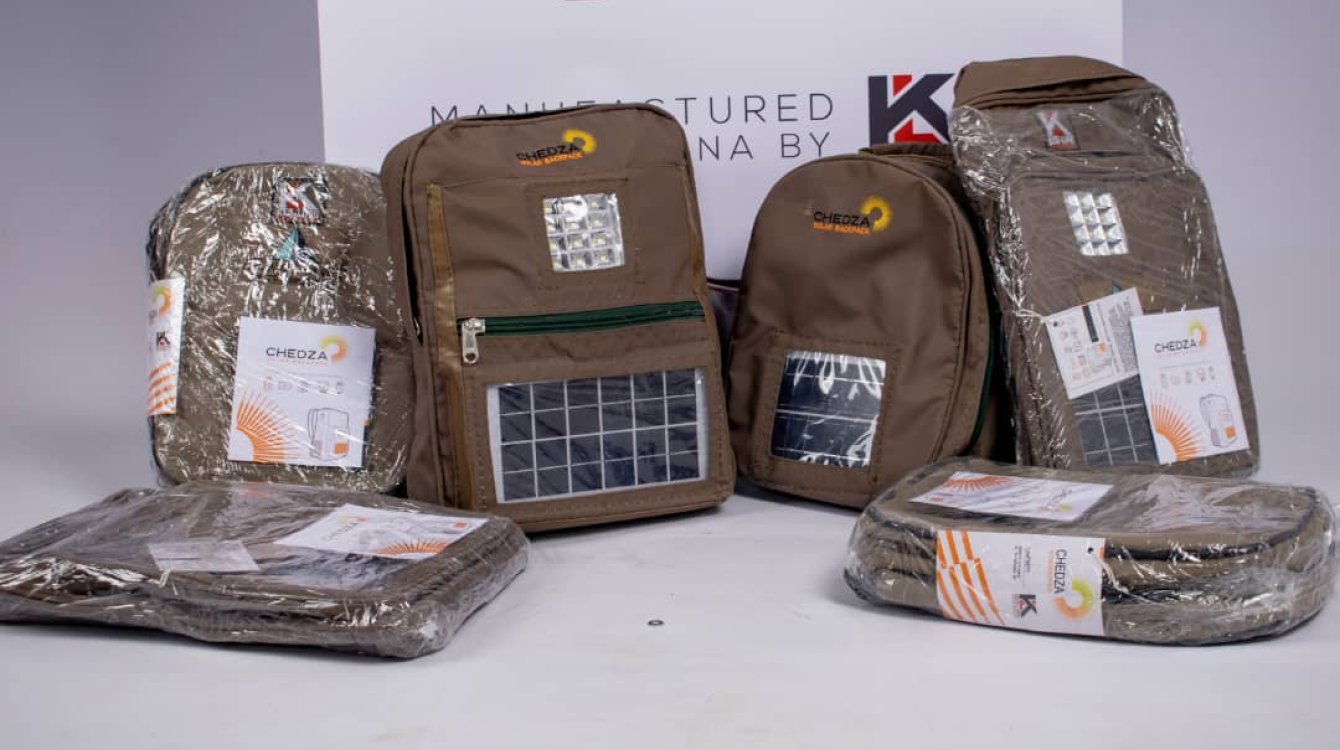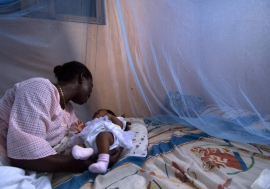For 32-year electronic engineer Kedumetse Liphi from Botswana, a chance encounter with a poor student on his way home was the spark that inspired a solar invention. “One day while driving around I came across a student who was using rice packaging for a schoolbag. We offered the child a ride home, where we discovered that their household was living below the poverty bracket,” said Mr. Liphi.
Lack of electricity is a major hindrance for many in Africa. For school going children, it affects hours of study, completion of their homework, revision for exams and other curriculum activities which are to be done at home.
According to the International Energy Agency, 600 million people in Africa lack access to electricity, most of them in sub-Saharan Africa. In Botswana, with a population of 2.5 million, access to electricity stood at 72 per cent in 2020, according to the World Bank. Sustainable Energy for All points out that the country has reached 77 per cent electricity access for the urban population, while in rural areas is still limited to 37 per cent, although increasing.
For Mr. Liphi, the chance meeting with the student, and the fact that Botswana is endowed with over 3,000 of sunshine annually, according to global solar data agency; Solargis.com, prompted him to create a pioneering solar backpack brand dubbed ‘Chedza,’ which means light in English.
The solar-powered invention is a compact backpack, made from durable, waterproof canvas, and includes an integrated solar panel which absorbs and stores sunlight during the day for use later at night.
“The LED light can last up to 7 hours,” he says.
The solar backpack charges small gadgets that school children in rural areas can use to access educational material online, and in the process advance digital learning.
Each backpack costs $54. Chedza has sold more than 100 backpacks so far. There is a plan to make the product accessible to the learners who cannot afford it.
“Our main objective is to partner with the government, NGOs and corporates to procure these bags from us for donation to learners from communities who cannot afford them,” Mr. Liphi said in an interview.
Dare to Dream, a Botswana-based social enterprise working towards the advancement of youth, women and girls in Science, Technology, Engineering and Mathematics (STEM), is the latest entity to procure the product: buying 33 bags for girls under the Jwaneng Mine Maranyane Bokamoso Programme (a STEM promotion project among girls aged 14-19 years).
The organisation’s Accountable Manager, Rethabile Mphafe, who spent a week with the girls at a boot camp in the diamond mining town of Jwaneng in Southern Botswana last December, says the procurement of these bags is a way of, ‘‘encouraging the girls that even the simplest solutions can come in handy for anyone.’’
She adds that the bags serve as motivation to the girls that solutions to today’s challenges are in their hands, regardless of their backgrounds.
Most of the girls are in boarding schools, therefore Chedza bags illuminate their rooms to enable reading and other school activities.
“It goes without saying that for one entrepreneur to grow, they need support. Our organisation also impacts students from underprivileged communities. As electricity is a basic need, being able to light at night and charge a mobile phone using solar energy could uplift their livelihoods,’’
Since the backpack prototype was released into the market in 2019, the local market is responding well thus far, and the product has been supplied as far as the US. Interest has grown beyond the intended use for educational purposes.
The manufacturers are continuously improving on the product to suit the standards of both the 4th and 5th industrial revolutions.
“We have recently partnered with the US Army to develop a military solar backpack with the same features and more to suit military personnel. Although there is interest internationally, our limitations stem from inadequate financing to help us to scale the manufacturing of the backpacks,” says Mr. Liphi.
Botswana’s minister of Education and Skills Development, Dr. Douglas Letsholathebe, has praised the innovation for its critical role in education. He called for more innovations and work in the solar economy.
“It is a great move in the right direction. What is needed now is for researchers to work on calibrating and assembling solar cells from our own laboratories which are ideal for our temperatures to improve the effectiveness of the panel, and for more jobs in the value chain,” said Dr. Letsholathebe.
The Botswana parliament adopted both the National Energy and Climate policies in 2021. The two stress the need for environmentally sustainable alternative energy mixes. The former recognises the need to harness available renewable energy resources, while the Climate Policy emphasises the need to minimise greenhouse gas emissions for the realisation of sustainable development.
The solar power revolution is therefore a critical part of the green economy to help mitigate climate change.
“Our vision incorporates utilising sustainability and use of renewable energy to create high impact solutions across Africa. Our innovations are customer-oriented, solutions-based and impact driven,” Mr. Liphi says.
The Chedza backpack is aiming to contribute to SDG 4 on inclusive and equitable quality education and promote lifelong learning opportunities for all, and SDG 7 on access to affordable, reliable, sustainable, and modern energy for all.



















